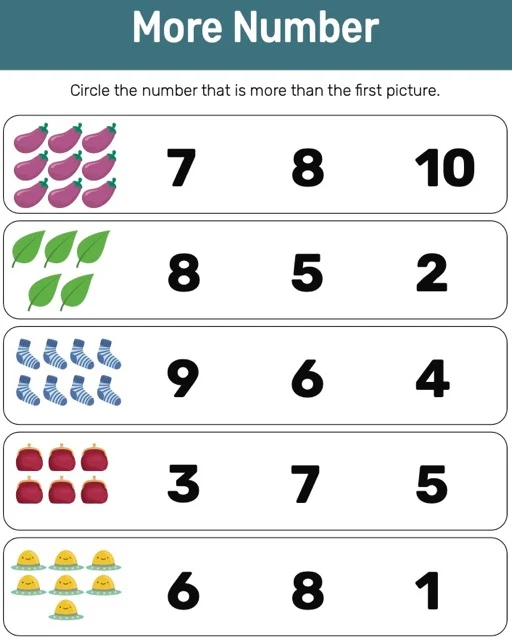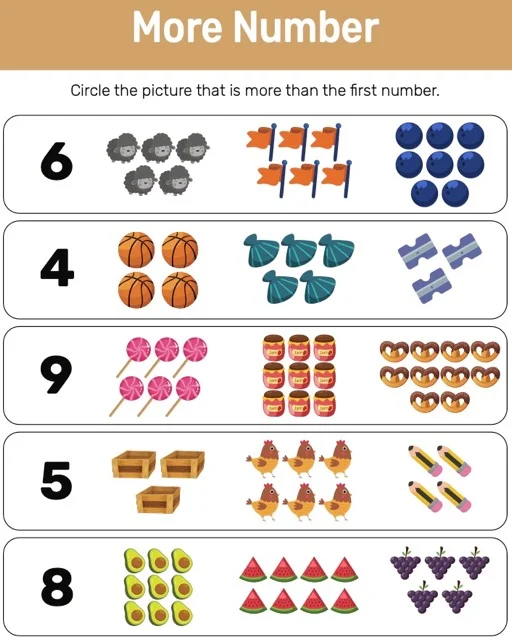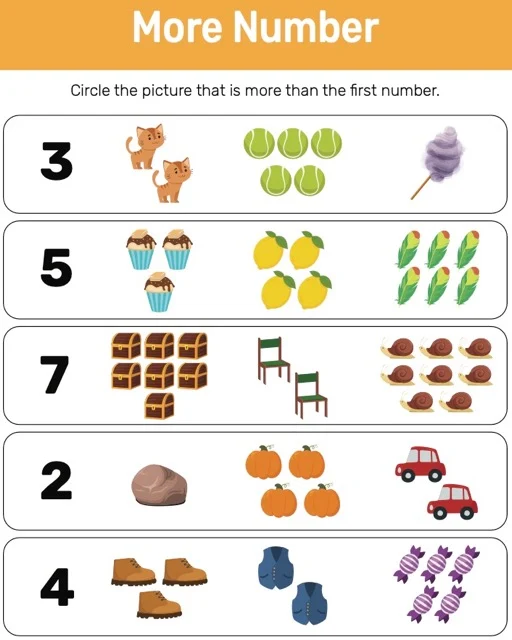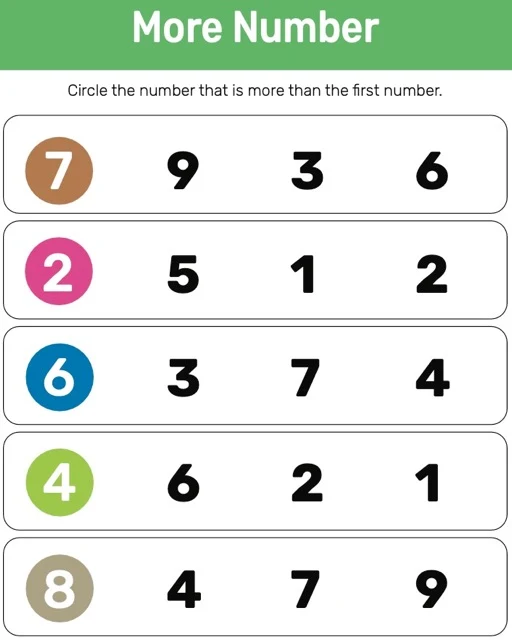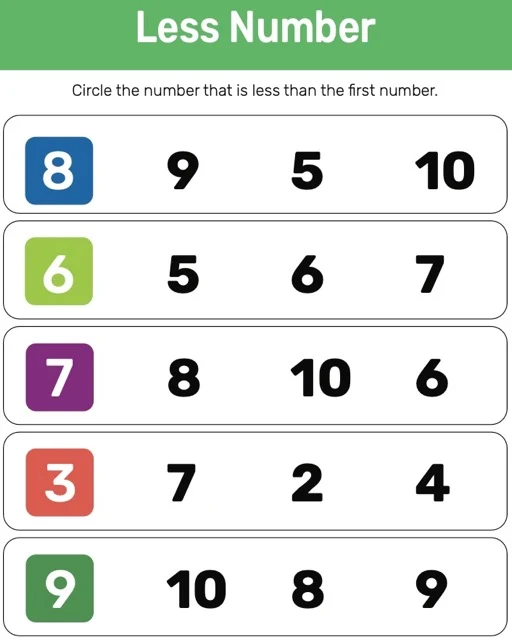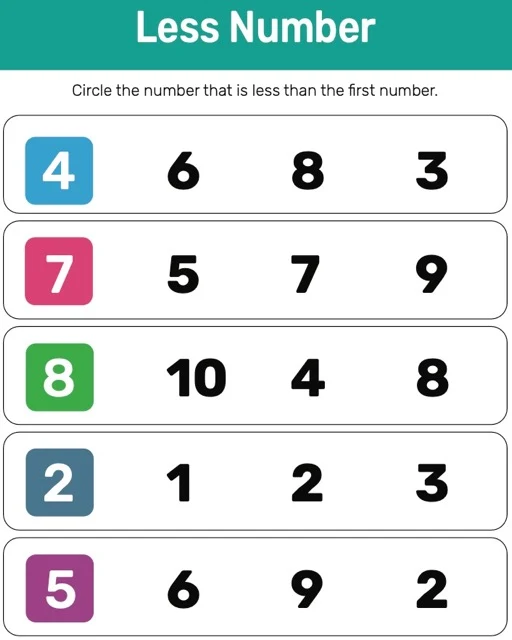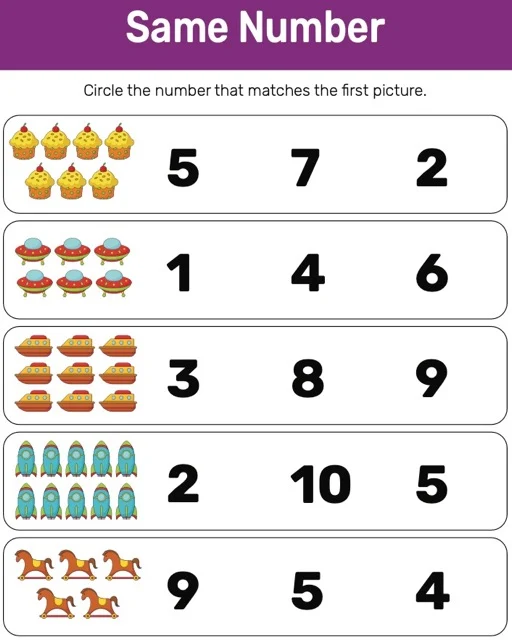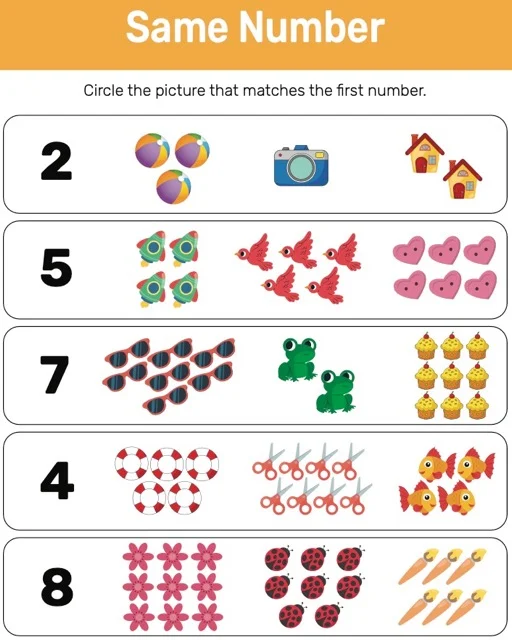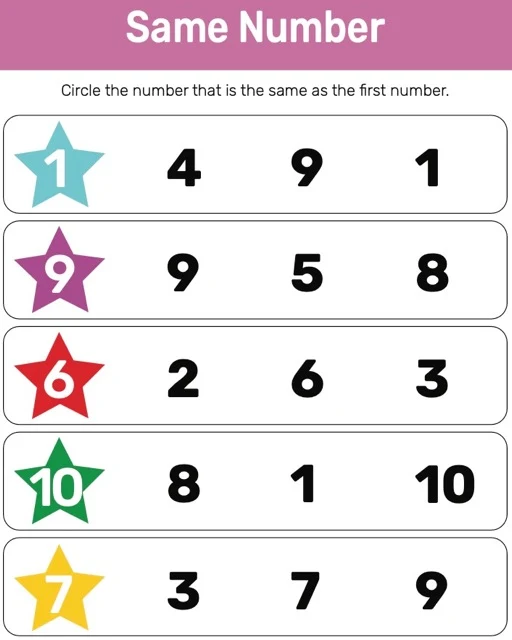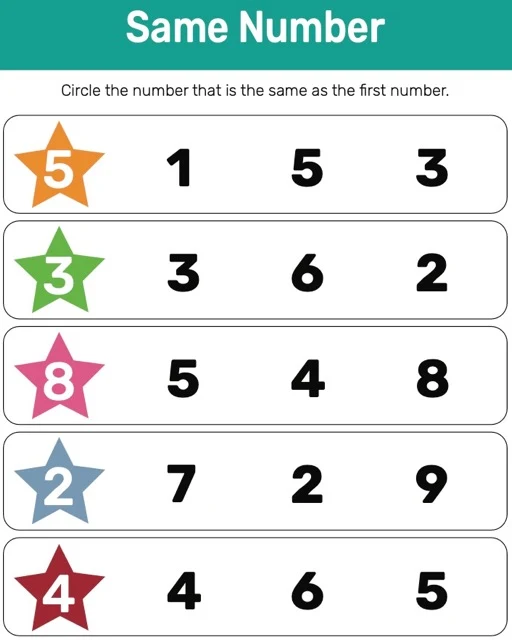The Same Number Test: Assessing Early Math Skills
This briefing document describes the "Same Number" test, a visual assessment for early childhood number recognition skills. Three sources detail the test's administration, interpretation, and underlying skills assessed—number recognition, visual discrimination, and one-to-one correspondence. The test's effectiveness in identifying potential learning difficulties and the importance of early intervention are emphasized. Additional considerations highlight the value of using the test alongside other assessments and the need for equitable assessment practices. The document concludes by stating that the test is a useful tool for evaluating a child's foundational mathematical skills.
Assessing Early Number Recognition Skills
Briefing Document: Early Number Recognition Skills Assessment
This briefing document reviews the "Same Number" test, a visual assessment tool used to evaluate early number recognition skills in children. It draws upon three sources:
1.
"Early Number Recognition Skills Assessment": A comprehensive document outlining the test, its purpose, administration, interpretation, and related concepts.
2.
"Same Number Test: A Visual Assessment": A concise FAQ document focusing on practical aspects of the test.
3.
"Testing Theme: Same, Less, More.pdf": An example sheet demonstrating the visual format of the "Same Number" test.
Key Themes and Ideas
●
Purpose of the Test: The primary objective of the "Same Number" test is to assess a child's ability to recognize and match identical numbers within a set. This provides insight into their foundational number sense and visual discrimination skills. ("Early Number Recognition Skills Assessment" - Answer Key 1)
●
Test Administration: The test involves presenting rows of numbers, each starting with a "target" number. The child must circle the number in the row that matches the target number. ("Same Number Test: A Visual Assessment" - How is the test administered?)
●
Skills Assessed: The test evaluates:
○
Number Recognition: Identifying and differentiating numerals (e.g., distinguishing between "5" and "8").
○
Visual Discrimination: Noticing subtle visual differences and similarities (e.g., differentiating between "6" and "9").
○
One-to-one Correspondence: Understanding that each numeral represents a specific quantity. ("Same Number Test: A Visual Assessment" - What skills does the "Same Number" test assess?)
●
Interpretation: Successful completion indicates a good grasp of basic number recognition and visual discrimination. Difficulties may suggest challenges in these areas, attention to detail, or other cognitive processes. ("Early Number Recognition Skills Assessment" - Answer Key 4)
●
Importance of Early Assessment: Early evaluation of these skills is crucial as they are building blocks for more complex mathematical concepts. Timely intervention can address potential difficulties and ensure a strong mathematical foundation. ("Early Number Recognition Skills Assessment" - Answer Key 10)
Examples from Source Documents
●
"Testing Theme: Same, Less, More.pdf" provides a visual representation of the test format:
# SameNumber Circlethenumberthatisthesameasthefirstnumber.
# 5 5
# 3 6 2
# 8 5 4 8
# 7 2 9
# 4 4 6 5
●
Quotes highlighting key points:
○
"Struggling with the 'Same Number' test could suggest potential challenges with number recognition, visual discrimination, attention to detail, or other underlying cognitive processes." ("Early Number Recognition Skills Assessment" - Answer Key 4)
○
"Engaging activities like counting objects, playing number-based games, and using flashcards can help children develop strong number recognition skills." ("Same Number Test: A Visual Assessment" - How can I help my child practice number recognition?)
Additional Considerations
●
The "Same Number" test is a valuable screening tool but should be considered alongside other assessments for a comprehensive evaluation of a child's mathematical abilities.
●
Cultural and socioeconomic factors may influence a child's performance, necessitating equitable assessment practices.
Conclusion
The "Same Number" test is a simple yet effective tool for assessing early number recognition and visual discrimination skills. Early identification of potential difficulties allows for timely intervention to support children in developing a strong foundation for future mathematical learning.
Same Number Test: A Visual Assessment
Same Number Test: Frequently Asked Questions
What is the "Same Number" test?
The "Same Number" test is a simple visual assessment designed to evaluate a child's ability to recognize and match identical numbers within a set.
How is the "Same Number" test administered?
The test presents rows of numbers, with one target number at the beginning of each row. The child is asked to circle the number in the row that matches the target number.
What age group is the "Same Number" test appropriate for?
While the provided excerpt doesn't specify an age range, this type of test is typically used for preschool or early elementary children who are developing basic number recognition skills.
What skills does the "Same Number" test assess?
This test primarily assesses:
●
Number recognition: The ability to visually identify and differentiate between numerals.
●
Visual discrimination: The ability to notice subtle differences and similarities in visual stimuli.
●
One-to-one correspondence: The understanding that each written numeral represents a specific quantity.
What does a successful "Same Number" test indicate?
Successfully completing this test suggests the child has a solid grasp of basic number recognition and can visually discriminate between different numerals.
What if a child struggles with the "Same Number" test?
Difficulty with this test might indicate challenges with number recognition, visual discrimination, or attention to detail. Further assessment or targeted activities can help address these areas.
How can I help my child practice number recognition?
Engaging activities like counting objects, playing number-based games, and using flashcards can help children develop strong number recognition skills.
Are there variations of the "Same Number" test?
Yes, the concept of matching can be adapted. Instead of numbers, the test could use shapes, letters, or colors to assess visual discrimination and matching abilities.
Early Number Recognition Skills Assessment
Understanding Early Number Recognition Skills
Short-Answer Quiz
Instructions: Answer the following questions in 2-3 sentences each.
1.
What is the primary purpose of the "Same Number" test?
2.
Describe the specific task a child is asked to perform during the "Same Number" test.
3.
Identify two key skills that the "Same Number" test assesses in children.
4.
What might difficulty with the "Same Number" test indicate about a child's development?
5.
Suggest two activities that parents or educators can use to help children improve their number recognition skills.
6.
Explain the concept of "one-to-one correspondence" and its relevance to the "Same Number" test.
7.
Besides numbers, what other visual elements could be used in variations of matching tests?
8.
How does the "Same Number" test relate to the broader concept of "visual discrimination"?
9.
What can be inferred about a child's understanding of numbers if they successfully complete the "Same Number" test?
10.
Why is it important to assess a child's ability to recognize and match numbers at an early age?
Short-Answer Quiz Answer Key
1.
The "Same Number" test aims to evaluate a child's ability to recognize and match identical numbers within a set. It helps assess their foundational number sense and visual discrimination skills.
2.
During the test, a child is presented with rows of numbers, each row beginning with a "target" number. The child is then asked to circle the number in the row that matches the target number.
3.
The "Same Number" test primarily assesses number recognition (identifying and differentiating numerals) and visual discrimination (noticing subtle visual differences and similarities).
4.
Struggling with the "Same Number" test could suggest potential challenges with number recognition, visual discrimination, attention to detail, or other underlying cognitive processes. Further assessment can help pinpoint specific areas needing support.
5.
To improve number recognition, activities like counting everyday objects, playing number-based board games, and using flashcards with numerals can be engaging and effective.
6.
One-to-one correspondence refers to the understanding that each written numeral represents a specific quantity. In the "Same Number" test, children must apply this concept to match the target number with its identical counterpart in the row.
7.
Variations of matching tests could utilize shapes, letters, colors, or even simple pictures to assess visual discrimination and matching abilities beyond number recognition.
8.
The "Same Number" test relies heavily on visual discrimination, as children must carefully observe and distinguish between similar-looking numerals to find the correct match.
9.
Successfully completing the "Same Number" test suggests that a child has grasped the basic concept of number recognition and can visually discriminate between different numerals. This indicates a positive step in their early math development.
10.
Early assessment of number recognition and matching is crucial because these skills form the building blocks for more complex mathematical concepts. Identifying potential difficulties early allows for timely intervention and support to ensure children develop a strong mathematical foundation.
Essay Questions
1.
Discuss the importance of early number recognition skills in a child's overall cognitive development. How do these skills connect to later mathematical learning?
2.
Analyze the potential limitations of the "Same Number" test as a sole indicator of a child's mathematical abilities. What other factors should be considered in a comprehensive assessment?
3.
Compare and contrast the "Same Number" test with other assessments commonly used to evaluate early mathematical skills. What are the strengths and weaknesses of each approach?
4.
Develop a lesson plan for a preschool classroom that incorporates the concepts of number recognition, visual discrimination, and one-to-one correspondence. Include specific activities and materials.
5.
Explain how cultural and socioeconomic factors might influence a child's performance on the "Same Number" test. Discuss strategies for promoting equitable assessment practices.
Glossary of Key Terms
●
Number Recognition: The ability to visually identify and name numerals (e.g., recognizing "5" as the numeral representing the quantity five).
●
Visual Discrimination: The ability to perceive and differentiate between subtle differences and similarities in visual stimuli (e.g., noticing the slight difference in shape between the numerals "6" and "9").
●
One-to-one Correspondence: The understanding that each numeral represents a specific quantity and that there is a one-to-one relationship between objects and their corresponding numerals (e.g., matching one object to the numeral "1," two objects to the numeral "2," and so on).
●
Target Number: In the "Same Number" test, the numeral presented at the beginning of each row that serves as the reference point for matching.
●
Matching: The process of pairing or grouping items based on shared characteristics or features (e.g., finding the numeral in the row that is identical to the target number).
●
Assessment: The process of gathering information about a child's knowledge, skills, and development through various methods like observation, tests, and interviews.
●
Early Intervention: Providing support and targeted activities to address potential learning difficulties or developmental delays at a young age to maximize a child's learning potential.
●
Cognitive Development: The growth and maturation of mental processes such as thinking, learning, memory, and problem-solving.
●
Numeracy: The ability to understand and work with numbers and mathematical concepts effectively in everyday life.
